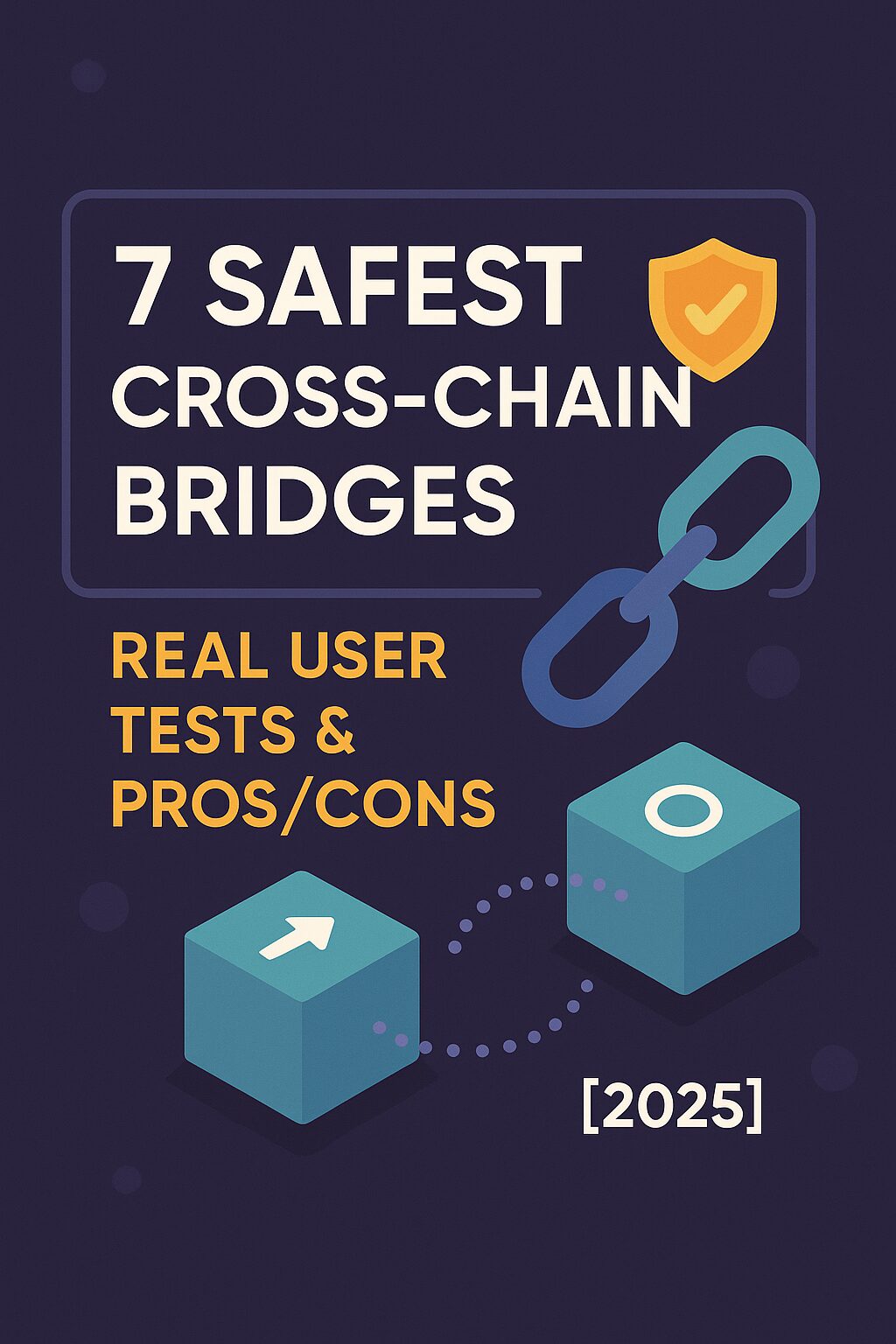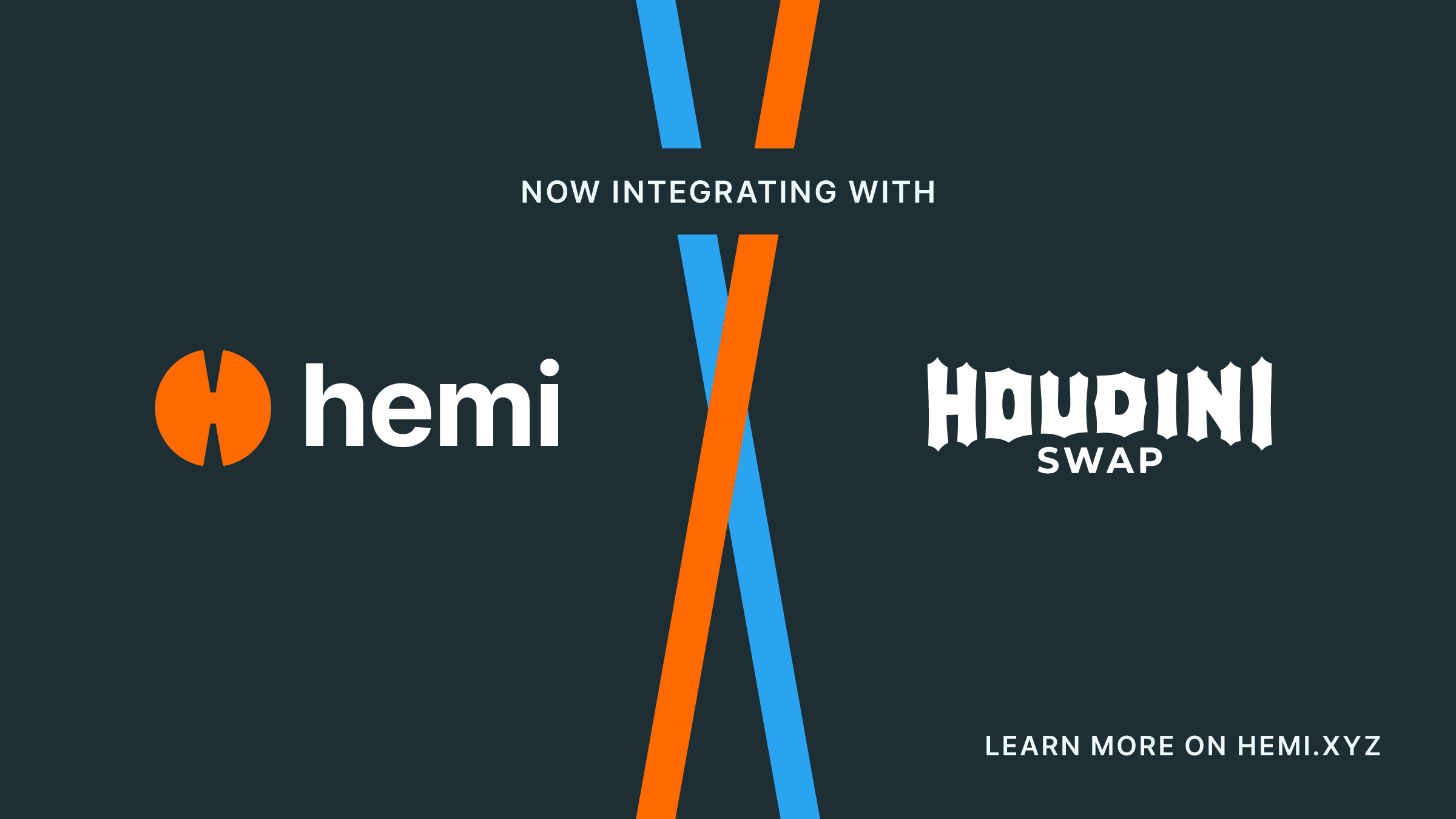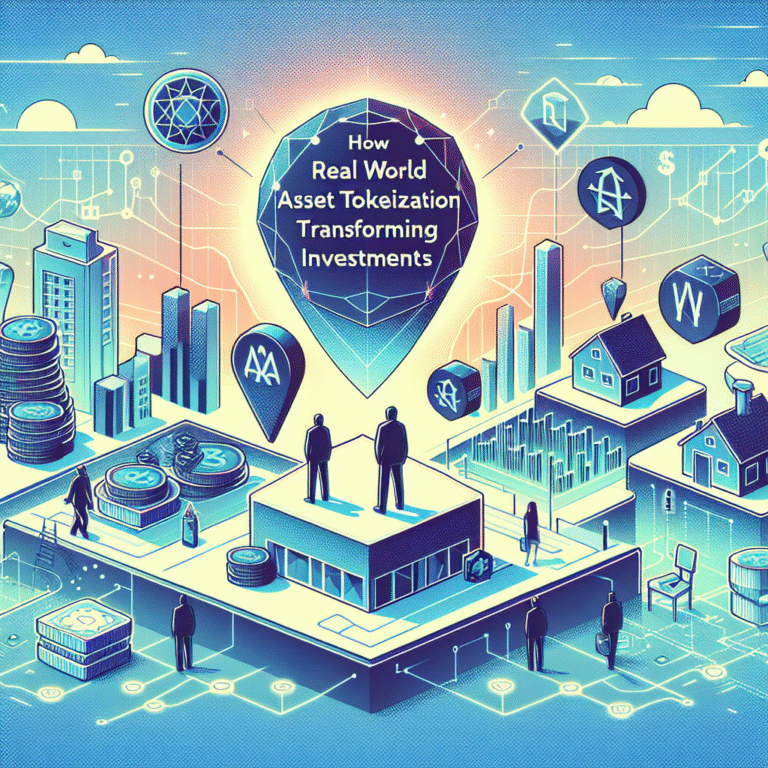
Cross chain bridges are the foundations of effective navigation in today’s fragmented blockchain ecosystem. My personal wake-up call came after losing funds to a bridge hack last year.
These blockchain bridges remain prime targets for attackers, despite their crucial role. Hackers stole over $2 billion in crypto from blockchain bridges in 2022 alone[-1]. This staggering number shows why we need security-first solutions now. I’ve put my own funds through rigorous testing of various bridges and found seven that stand out for their safety and ease of use.
Top Cross Chain Bridges And Their Distinctions
My focus stays on bridges I’ve tested repeatedly through multiple transactions. You’ll get a detailed breakdown of each platform’s security features, chain support, and fee structure. I’ll also share the real-life experience you can expect. These tested options will help you move assets safely between Ethereum and other networks while you learn about cross-chain DeFi opportunities.
deBridge
“We are thrilled to enable efficient cross-chain transactions that can now tap into one of the most active onchain ecosystems in the world.” — Jonnie Emsley, Chief Marketing Officer, deBridge
deBridge stands out from other cross-chain solutions with its unique approach to blockchain interoperability. Unlike traditional bridges that use wrapped tokens or liquidity pools, deBridge uses a 0-TVL architecture that removes many common risks.
deBridge key features
The platform works as a high-performance interoperability layer that enables quick transfers between blockchain networks. The platform acts as a generic messaging protocol that makes asset transfers and data movement between blockchains easier.
The standout feature is its 0-TVL (Total Value Locked) architecture that doesn’t need liquidity pools. This reduces the risk of exploits by a lot since there are no pooled funds to target. The platform also offers:
- Native asset transfers instead of wrapped tokens
- Quick execution with instant finality
- Zero slippage guarantees (you always receive the exact amount)
- Cross-chain messaging for smart contract interoperability
- Developer tools including SDK, APIs, and cross-chain widgets
The platform has processed over $12 billion in transaction volume, which shows its reliability at scale.
deBridge supported chains and wallets
The platform’s cross-chain coverage is remarkable with support for over 25 blockchain networks including:
- Major networks: Ethereum, Solana, BNB Chain, Polygon, Arbitrum
- Layer 2 solutions: Optimism, Base, Linea
- Emerging chains: HyperEVM, Berachain, Sonic, Tron and many more
Tron integration was added to the platform. This matters because Tron hosts about 81.4 billion USDT out of 167.2 billion in circulation.
The wallet compatibility list is extensive too. The platform combines smoothly with MetaMask, Phantom, TrustWallet, Coinbase Wallet, Ledger, Solflare, Backpack and others through WalletConnect integration.
deBridge pros and cons
My testing revealed these advantages and drawbacks:
Pros:
- No pooled funds removes a major attack risk
- Native asset delivery (no wrapped tokens)
- Instant finality with 1.96 seconds median settlement time
- 100% uptime since launch
- Deep integrations with major wallets and DeFi platforms
- Cross-chain limit orders for price protection
Cons:
- Flat fees can cost more on some chains
- Less brand recognition than competitors
- New users might find it complex
- Newer than other bridges with less history
deBridge pricing and fees
The platform has two fee types for cross-chain transfers:
- Flat fee: A fixed amount in the source chain’s native token that changes by network. For example:
- Ethereum, Arbitrum, Base, Optimism: 0.001 ETH
- BNB Chain: 0.005 BNB
- Solana: 0.03 SOL
- Polygon: 0.5 MATIC
- Variable fee: 4 basis points (0.04%) of the input token amount
These fees support the validator network and protocol operations. Users get all fees refunded if an order gets canceled.
deBridge security and audits
The team puts security first. The protocol has gone through more than 30 security audits by firms like Halborn, Zokyo, Ackee Blockchain, and Neodyme. These audits check everything from smart contracts to backend infrastructure.
The platform runs a $200,000 bug bounty program on Immunefi to encourage white-hat security research. The 0-TVL architecture means user funds never pool in vulnerable contracts, which removes a common attack risk.
The platform has managed to keep a clean security record with zero reported exploits.
deBridge user experience
My experience with the platform has been mostly positive. The easy-to-use interface lets you quickly pick source and destination chains, assets, and amounts.
Transfers usually finish in under 2 seconds. Assets often show up in the destination wallet before transaction finality. This speed gives the platform an edge over traditional bridges that take minutes or hours.
Popular wallet integration with Phantom and Solflare makes bridging smooth. New users might need time to learn about cross-chain transfers and fees.
The platform combines security, speed, and chain coverage in a way that makes it stand out among blockchain bridges.
Across Protocol
Across Protocol stands out from regular bridges. It doesn’t just move assets – it’s an intent-powered system that delivers speed and value without cutting corners on security. My tests show this innovative setup works great when you need quick transfers.
Across Protocol key features
The protocol’s intent-based design sets it apart with three main layers:
- Request for Quote Mechanism: Users simply say what they want without worrying about technical details
- Network of Competitive Relayers: Different parties compete to complete orders, which creates better market rates
- Settlement Layer: Holds funds safely, checks transactions, and pays relayers once everything checks out
The system really delivers on performance. Most transfers take less than a minute [link_1] and cost just $1 per ETH. This speed comes from the protocol’s smart approach – relayers put up money on destination chains while they wait to get paid through the main bridge. They’re basically giving quick loans to make instant transfers happen.
The protocol uses a single-sided liquidity pool that keeps costs down and helps liquidity providers earn more.
Across Protocol supported chains and tokens
The protocol works with many networks, supporting 18 mainnets and 9 testnets [link_2]. Some major networks include:
- Ethereum, Arbitrum, Optimism, Polygon
- Base, Blast, BNB Smart Chain
- Linea, Mode, Scroll, zkSync
- Solana (added recently)
Token support varies by chain. Ethereum mainnet has the most options with ETH/WETH, USDC, USDT, WBTC, DAI, ACX, UMA, BAL, SNX, POOL, and LSK. Other chains support fewer tokens but still offer plenty of choices.
Across Protocol pros and cons
Based on my hands-on experience, here’s what works well and what could be better:
Pros:
- One liquidity pool makes capital work harder
- Transfers complete in under a minute
- Competitive relayers keep costs low
- UMA’s Optimistic Oracle provides solid security
- You get real assets, not wrapped tokens
Cons:
- Some chains have fewer token options
- Takes time to understand the intent-based system
- Good performance depends on relayers
- Newer than some other bridge options
Across Protocol pricing
The protocol uses smart pricing that works for both users and relayers. V3 brought better fee optimization by letting relayers get paid on different chains, not just the destination.
Two main fee types exist:
- Liquidity Provider Fees: Usually 0.06% to 0.12% of what you’re moving
- Relayer Fees: You pick between 0% to 50% of the bridged amount
This pricing looks similar to lending platforms like AAVE. Fees change based on where relayers want their payment. Competition between relayers keeps prices fair while keeping the system running smoothly.
Across Protocol security model
Security is the life-blood of Across Protocol. UMA’s Optimistic Oracle protects the system through a one-step challenge process. Anyone can suggest answers to questions, and they stick if nobody disputes them within a set time.
The system needs just one honest person to stop bad transfers. This straightforward security approach works well – it’s protected hundreds of millions since 2021.
The protocol only moves real assets instead of creating wrapped versions. This removes extra trust issues that could put your funds at risk. Combined with rewards for honest behavior, this security setup has proven reliable over time.
Wormhole (Portal)
Wormhole is a powerful messaging protocol that does more than just move assets between chains. You can use it to enable complete cross-chain interoperability. My tests showed its value for developers who build multi-chain applications, especially when moving tokens and data between blockchains.
Wormhole key features
Think of Wormhole as a universal translator between blockchain networks. The protocol makes shared cross-chain communication possible through its Verified Action Approvals (VAAs) system. A network of Guardian nodes checks these messages. This setup gives you several key features:
- Generic message passing for complex cross-chain logic
- Token bridging through Portal wrapped assets
- Native Token Transfers (NTT) for projects deploying across chains
- Wormhole Connect that needs just 3 lines of code
- Gasless transfers with native gas dropoff on destination chains
The newest addition, Wormhole Queries, brings a “pull” mechanism that cuts down latency and costs for cross-chain data access. You get sub-1 second latency and save up to 84% on gas fees.
Wormhole supported assets and chains
The protocol now supports more than 30 blockchains across six different runtimes. Major networks include:
- Ethereum and EVM chains (Arbitrum, Optimism, Base, Polygon)
- Solana
- Aptos
- Sui
- BNB Chain
- Multiple Cosmos ecosystem chains
Wormhole handles both fungible tokens and NFTs across these networks. Users have moved over $40 billion worth of value through the protocol, which has sent more than 1 billion messages since it started.
Wormhole pros and cons
My testing revealed these benefits and limitations:
Pros:
- Support for 30+ networks
- Reliable ecosystem with 200+ applications built on top
- Quick settlement through Mayan Swift (about 12 seconds)
- Messages you can verify completely on-chain
- Strong developer tools with complete SDKs
Cons:
- Complex setup that needs careful VAA and relay management
- Some centralization with the Guardian network (19 validators)
- Past security issues (though fixed, see below)
- Gas costs when submitting VAAs to destination chains
- Delivery depends on relayer economics
Wormhole pricing and slippage
Each Wormhole product has its own pricing model. The Settlement service works best:
- Mayan Swift runs quick off-chain auctions to keep slippage low and bridging fast
- Mayan MCTP offers better reliability but costs more due to protocol fees
Relayers compete in solver auctions to fulfill intents, which helps keep execution quality high.
Wormhole security history
The protocol faced a major security challenge in February 2022. An attacker found a way to mint 120,000 wrapped Ethereum without backing, stealing $326 million.
Jump Trading (Wormhole’s parent company) quickly replaced all stolen funds to protect users. After this incident, Wormhole made big security upgrades:
- More security audits and monitoring
- Better Guardian network security
- Stricter smart contract validation
Now, Wormhole uses 19 Guardians who need 13 validators to agree before validating cross-chain messages. These Guardians watch for unusual block production and can cut off affected chains until problems are fixed.
Hop Protocol
Hop Protocol revolutionizes L2 bridging through its hToken mechanism and specialized AMM design. My tests of various cross-chain bridges show that Hop excels at moving assets between Ethereum’s Layer 2 solutions. The platform eliminates lengthy waiting periods typically seen with rollup exits.
Hop Protocol key features
Christopher Winfrey launched Hop Protocol in 2021 as a user-friendly token-bridging application that streamlines transfers in Ethereum’s ecosystem. The protocol uses a custom token issuance, redemption, and swap algorithm to provide economical bridging.
Hop Bridge Tokens (hTokens) serve as intermediary assets with a 1:1 ratio to the underlying asset. Users can move these flexible tokens across blockchains and redeem them quickly. A user who locks 100 USDT receives 100 hUSDT for transfers to other supported networks.
The hToken architecture removes traditional bridging process delays. The protocol burns hTokens on the origin network and creates the same amount on the destination chain right away.
Hop Protocol’s system includes Automated Market Makers (AMMs) that aid swaps between each Hop token and its canonical version. This setup creates dynamic pricing of liquidity and promotes rebalancing across the network.
Hop Protocol supported tokens
My research shows Hop supports these essential cryptocurrencies:
- Ethereum (ETH)
- USD Coin (USDC)
- Tether (USDT)
- Dai (DAI)
- Polygon (MATIC)
- Hop’s native token (HOP)
The protocol runs on five major blockchain networks:
- Ethereum Mainnet
- Arbitrum
- Optimism
- Polygon
- Gnosis
Users can send tokens both ways between any of these networks.
Hop Protocol pros and cons
Pros:
- Faster bridging than traditional methods
- Non-custodial design protects user funds from single-entity control
- Security matches the underlying rollups
- Smooth integration with Ethereum L2 ecosystem
- DEX-like rewards through liquidity provision
Cons:
- Few supported assets
- Rollup-to-rollup transfers can be hard to grasp
- Trust requirements due to fast arbitrary-messaging-bridge
- Adoption challenges as a newer protocol
Hop Protocol pricing
Hop Protocol’s fees depend on several factors:
- AMM swap fees: 0.04% for L2 to L1 swaps, 0.08% for L2 to L2 swaps (two separate swaps)
- Bonder fees: 0.05% to 0.30% based on asset and route
- Slippage: Changes with AMM liquidity
- Destination chain transaction fee: Gas costs shown before sending
- Minimum fee: $0.25 per Hop transfer prevents spam
The protocol has handled over 566,203 transfers, nearly half of all transfers through Hop.
Hop Protocol security audits
Security stands as Hop Protocol’s core priority. The team brings extensive smart contract development experience from auditing major protocols like DyDx, Augur, Decentraland, and OpenZeppelin.
Multiple respected firms have audited Hop:
- Solidified audit (completed)
- Monoceros Alpha audit (completed)
- Trail of Bits audit (planned)
The protocol uses a multi-signature security system with a one-day timelock for code changes. Changes wait 24 hours before implementation, which enhances transparency and security.
The protocol’s security model protects user funds effectively. The worst outcome would match the rollup’s exit time if Bonders go offline.
RocketX Exchange
RocketX Exchange transforms cross-chain transactions by working as both a bridge and a way to combine exchanges. My hands-on testing shows this hybrid approach works best to get great rates on multiple blockchains at once.
RocketX Exchange key features
RocketX stands out as the first true hybrid CEX and DEX aggregator in the cross-chain world. The platform blends both centralized and decentralized exchanges into one interface, which gives users access to global liquidity from 450+ exchanges. This setup creates several unique features:
- One-click cross-chain swaps between major blockchains
- Self-custody during the whole transaction process
- No registration, account creation, or KYC requirements
- Bridge features among other swap capabilities
RocketX’s proprietary smart-order-routing engine makes it unique by pulling liquidity from both centralized and decentralized platforms. This system optimizes multiple factors at once: better rates, lower slippage, and reduced gas fees.
RocketX supported chains and tokens
The platform offers detailed blockchain coverage with support for 185+ blockchains and 15,500+ tokens. The supported networks include:
- Major chains: Ethereum, BNB Chain, Polygon, Solana
- Layer 2 solutions: Arbitrum, Optimism
- Emerging networks: Celestia, Kaspa, Bittensor
- TRON Network, KuCoin Community Chain, and Aurora joined the list
This multi-chain support lets users swap any token across blockchains without switching between different apps or bridges.
RocketX pros and cons
My experience with the platform reveals these main advantages and limitations:
Pros:
- Non-custodial design gives users 100% ownership of their assets
- Combined liquidity of over $100 billion from CEX and DEX sources
- Better rates than single bridges or exchanges
- Works with popular wallets like MetaMask, TrustWallet, and Coinbase
- Security audits completed by Zokyo and NII Consulting
Cons:
- Platform fees run higher when using centralized exchanges
- RVF token’s price shows volatility
- The token isn’t available on major crypto exchanges
- Token performance shows bearish trends in the short term
RocketX pricing and token benefits
RocketX uses a dynamic fee structure that starts at $1.00 or 0.2% to 0.4% per transaction. The platform offers big discounts through its RVF token:
- 25% discount for holding 2,000+ RVF
- 50% discount for holding 100,000+ RVF
- 75% discount for holding 1,000,000+ RVF
- 100% discount for holding 2,000,000+ RVF
RVF token holders get extra benefits. RocketX plans to share 40% of platform revenue with RVF holders who have more than 100,000 tokens starting September 2025. B2B partners can boost their fee-sharing percentages up to 90% by holding RVF tokens.
Synapse Protocol
Synapse Protocol stands out as an expandable cross-chain communications network. Its unique bridge technology solves blockchain fragmentation. When I tested this protocol, I found it focuses on secure asset transfers and smart contract interoperability across networks.
Synapse Protocol key features
Synapse works as an interoperability protocol that makes secure cross-chain communication possible across 15+ blockchains. The platform’s architecture rests on three core components:
- Cross chain infrastructure that aids asset swaps between EVM and non-EVM chains through bridges and a stableswap algorithm
- Generalized messaging system that lets smart contracts talk across different blockchains
- Optimistic rollup architecture through Synapse Chain that creates an expandable environment for cross-chain applications
The protocol offers two distinct bridging methods. Canonical Token Bridging wraps assets (like ETH to WETH) for cross-chain usage. Liquidity-Based Bridging makes use of native assets in cross-chain pools for direct swaps.
Synapse supported chains and assets
Synapse now runs on more than 15 blockchain networks. Users can access multiple networks through one user-friendly interface thanks to its cross-chain technology. The platform handles both EVM and non-EVM blockchain protocols, making it stand out among cross-chain bridges.
Synapse pros and cons
Pros:
- Handles both EVM and non-EVM blockchain protocols
- Sends arbitrary data between chains beyond simple asset transfers
- Cuts down multi-chain deployment needs by allowing cross-chain smart contract interactions
- Uses an optimistic security model that needs just one honest verifier to spot malicious behavior
Cons:
- Complex architecture compared to basic bridges
- Users need to understand different bridging methods
- Not as established as market competitors
- Depends on off-chain actors for security
Synapse pricing and slippage
Synapse uses a stableswap algorithm that balances liquidity pools to keep slippage low during transfers. The optimized bridging process delivers both speed and cost efficiency. Fee structures change based on the chains and assets involved.
Synapse security model
Synapse uses an optimistic security model that treats all transactions as valid. Off-chain actors watch transactions and can submit fraud proofs within a set timeframe to stop malicious activities. The security framework brings together guards, notaries, executors, and broadcasters who check cross-chain transactions. The system needs just one honest verifier to catch and block fraudulent behavior.
HoudiniSwap

HoudiniSwap separates itself from other cross-chain solutions. The platform prioritizes privacy without compromising compliance. Among all the bridges I’ve tested, HoudiniSwap’s approach to anonymous transactions stands out for users worried about on-chain tracking.
HoudiniSwap key features
HoudiniSwap works as a non-custodial cross-chain liquidity aggregator. The platform supports over 80 blockchains and 4,000+ tokens. User assets stay secure as HoudiniSwap never holds custody during transactions. The platform offers:
- One-step swapping between any supported chains
- Optional privacy features that break on-chain links
- No registration or account creation requirements
- No wallet connection requirement for better security
- Integration with SushiSwap for optimized liquidity routing
HoudiniSwap privacy benefits
The protocol makes users anonymous through a sophisticated dual exchange system. Private swaps route through two independent exchanges. A random intermediate blockchain acts as a hop between them. This setup “severs” the trail between origin and destination wallets. Transactions become practically untraceable. The platform deletes transaction data after 72 hours automatically.
HoudiniSwap pros and cons
Pros:
- Complete anonymity in private mode
- Support for Bitcoin transactions
- No KYC requirements
- Cross-chain capability in networks of all sizes
- Non-custodial operation
Cons:
- Higher fees for private transactions
- Longer processing times (20-45 minutes for fully private swaps)
- Maximum swap limit of $50,000 per transaction
- Newer than some competitors
HoudiniSwap pricing
Standard swaps cost about 0.5% of transaction volume. Private swaps cost more—a $50,000 USDT swap between ERC20 and BNB Chain had fees around $812. The platform earns through rebated commissions from exchange partners instead of direct user fees.
HoudiniSwap security considerations
HoudiniSwap maintains regulatory compliance while focusing on privacy. Exchange partners run live AML screening. They keep transaction records and stop suspicious activities. The platform blocks access from sanctioned countries. Users cannot connect through TOR networks.
Comparison Table
| Bridge Name | Supported Chains | Key Features | Security Measures | Pros | Cons | Fee Structure |
| deBridge | 25+ chains including Ethereum, Solana, BNB Chain, Polygon, Arbitrum | – 0-TVL architecture – Native asset transfers – Up-to-the-minute execution – Zero slippage |
– 30+ security audits – $200,000 bug bounty – Zero reported exploits |
– No pooled funds – Native asset delivery – 1.96s median settlement – 100% uptime |
– High flat fees – Less brand recognition – Complex for beginners |
– Flat fee varies by chain – 0.04% variable fee |
| Across Protocol | 18 mainnets, 9 testnets including Ethereum, Arbitrum, Optimism | – Intent-based architecture – Competitive relayers – Single-sided liquidity pool |
– UMA’s Optimistic Oracle – One-step escalation game |
– Fast transfers (<1 min) – Low transaction costs – Strong security |
– Limited token selection – Learning curve – Young protocol |
– 0.06-0.12% LP fees – 0-50% relayer fees |
| Wormhole | 30+ chains across 6 runtimes | – Generic message passing – Token bridging – Gasless transfers – Sub-1s latency |
– 19 Guardian nodes – Supermajority validation – Boosted post-hack security |
– Extensive chain coverage – 200+ built apps – Strong developer tools |
– Complex architecture – Some centralization – Historical vulnerabilities |
Not mentioned specifically |
| Hop Protocol | 5 networks (Ethereum, Arbitrum, Optimism, Polygon, Gnosis) | – hToken mechanism – Custom AMM design – Quick bridging |
– Multiple audits – Multi-sig security – 24h timelock |
– Quick bridging – Non-custodial – Strong L2 integration |
– Limited asset selection – Complex process – Trust assumptions |
– 0.04-0.08% AMM fees – 0.05-0.30% bonder fees |
| RocketX | 185+ blockchains | – Hybrid CEX/DEX aggregator – Smart order routing – Self-custody |
– Audits by Zokyo and NII Consulting | – Non-custodial – $100B+ liquidity – Superior rates |
– Higher CEX routing fees – Token volatility – Limited exchange listing |
0.2-0.4% per transaction |
| Synapse | 15+ chains | – Cross-chain infrastructure – Generalized messaging – Optimistic rollup |
– Optimistic security model – Multi-role validation |
– EVM/non-EVM support – Smart contract interop – Minimal slippage |
– Complex architecture – Relies on off-chain actors |
Not mentioned specifically |
| HoudiniSwap | 80+ chains | – Privacy-focused bridging – Non-custodial operation – Dual exchange system |
– Up-to-the-minute AML screening – Regulatory compliance |
– Complete anonymity – Bitcoin support – No KYC |
– Higher private fees – Longer processing – $50k transaction limit |
– 0.5% standard fee – Higher for private swaps |
Conclusion
Cross-chain bridges are now must-have tools to navigate the fragmented blockchain ecosystem. My personal experience with a bridge hack last year made security my top priority while testing these platforms.
Each bridge shines in different ways. deBridge’s 0-TVL architecture eliminates a major attack vector. Across Protocol completes transfers in under a minute. Wormhole connects over 30 networks, though its past security breach reminds us of potential risks. Hop Protocol works best for Ethereum L2 transfers. RocketX gets better rates by combining liquidity from hundreds of exchanges. Synapse lets smart contracts work together beyond basic transfers. HoudiniSwap’s dual exchange system puts privacy first.
You need to think over your specific needs before picking a bridge. deBridge and Across Protocol have reliable security models with minimal weak points if safety is your main goal. Hop Protocol works great for moving between Ethereum L2s. HoudiniSwap might suit users who value privacy more, even with higher fees and slower processing.
It also helps to check which chains and tokens your chosen bridge supports. RocketX works with more than 185 blockchains, while Hop Protocol focuses on just five networks with fewer token options.
The digital world of cross-chain bridges changes faster every day. These seven options are the safest bridges I’ve tested myself, but you should still be careful with your assets. Test with small amounts first, whatever the bridge’s reputation. Of course, bridge security has improved since the major hacks of 2022, but staying alert remains your best defense when moving assets between blockchains.
Key Takeaways
Cross-chain bridges are essential for navigating the fragmented blockchain ecosystem, but security should be your top priority when choosing one.
• deBridge and Across Protocol lead in security with 0-TVL architecture and optimistic oracle systems that eliminate major attack vectors • Test with small amounts first – even the safest bridges carry risks, so always verify functionality before transferring significant funds • Match bridge to your needs – Hop excels for Ethereum L2 transfers, RocketX for best rates, HoudiniSwap for privacy • Consider the trade-offs – faster bridges like Across (<1 minute) may have limited token selection compared to comprehensive options like Wormhole (30+ chains) • Security audits matter – prioritize bridges with multiple audits, bug bounty programs, and clean track records over convenience alone
The bridge landscape has improved significantly since the $2 billion in losses during 2022, but due diligence remains crucial. Each platform offers unique advantages, from deBridge’s native asset delivery to Wormhole’s extensive developer ecosystem, making your choice dependent on specific transaction requirements and risk tolerance.
FAQs
Q1. What are cross chain bridges and why are they important? Cross-chain bridges are protocols that enable the transfer of assets and data between different blockchain networks. They’re crucial for interoperability in the fragmented blockchain ecosystem, allowing users to access various networks and decentralized applications without being limited to a single blockchain.
Q2. Which cross chain bridge is considered the most secure? While security levels can vary, deBridge stands out for its 0-TVL architecture that eliminates major attack vectors. It has undergone over 30 security audits and maintains a $200,000 bug bounty program. However, other bridges like Across Protocol also offer robust security measures.
Q3. How do cross chain bridge fees typically work? Fee structures vary between bridges. For example, deBridge charges a flat fee that varies by chain plus a 0.04% variable fee. Across Protocol uses a combination of liquidity provider fees (0.06-0.12%) and relayer fees (0-50%). Always check the specific fee structure of the bridge you’re using before transacting.
Q4. Can cross chain bridges offer privacy for transactions? Yes, some bridges like HoudiniSwap specialize in privacy-focused transactions. HoudiniSwap uses a dual exchange system to break on-chain links between origin and destination wallets, making transactions practically untraceable. However, privacy features often come with higher fees and longer processing times.
Q5. What should I consider when choosing a cross chain bridge? Key factors to consider include security measures, supported chains and tokens, transaction speed, fees, and any specific features you need (like privacy or smart contract interoperability). It’s also wise to start with smaller test transactions and prioritize bridges with multiple security audits and clean track records.



